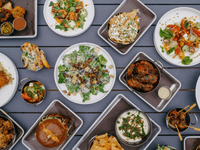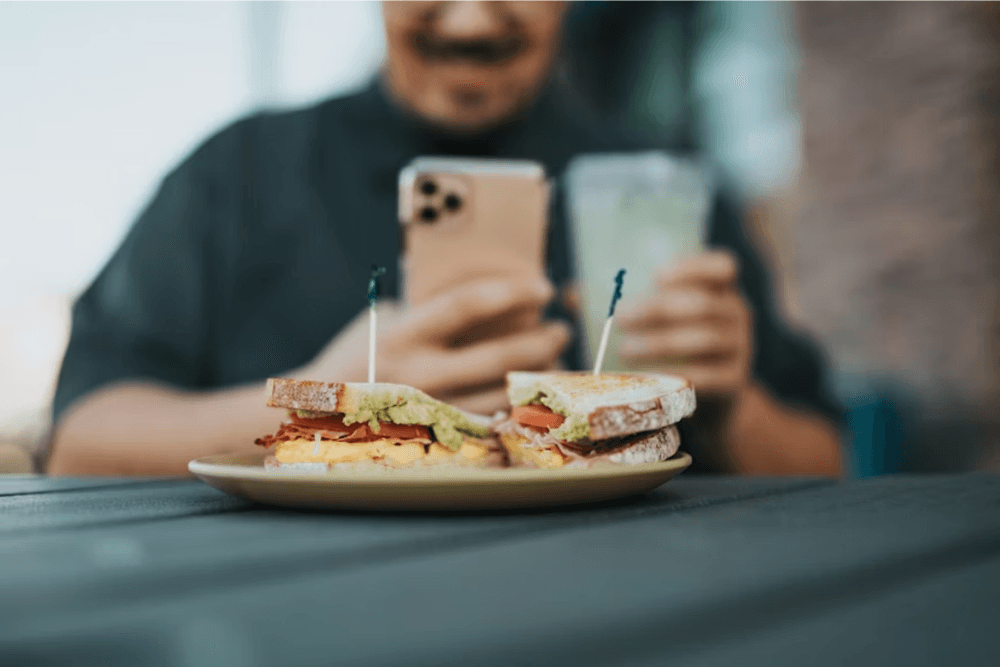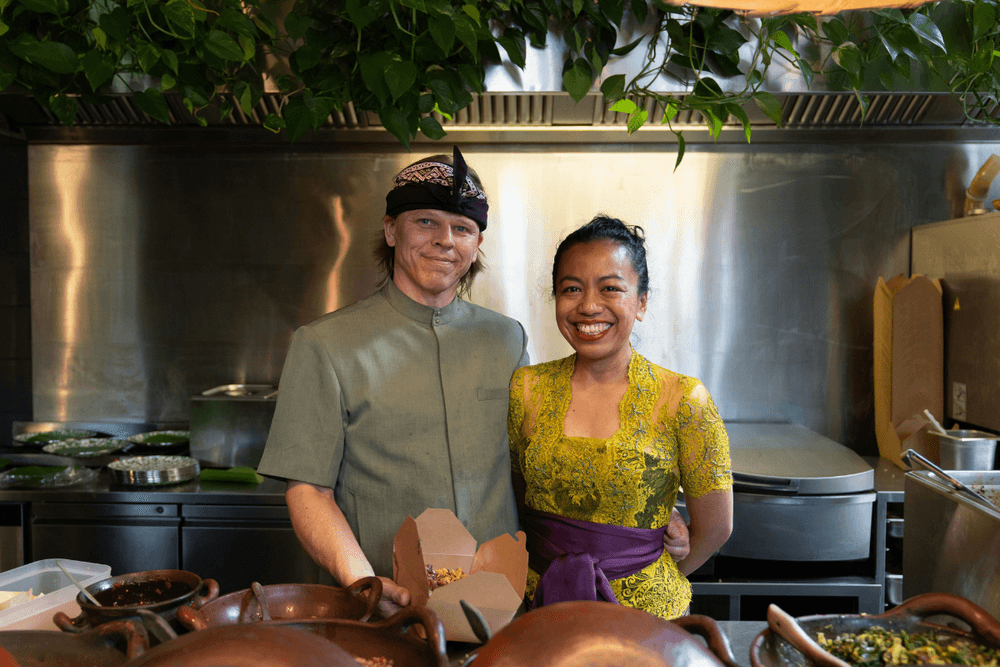Menu Costing Guide for Alternative Kitchens Success
Table of Contents
CloudKitchens
How many tacos can be delivered from a 1000sqft restaurant?
The same amount as a 200sqft ghost kitchen.
Mastering menu costing is essential to maximize profits and stay competitive in shared, ghost, and CPU kitchen models.
Whether you’re preparing meals for catering, bulk meal prep, or virtual restaurants, controlling costs is key to sustainable growth.
Accurate menu costing allows kitchen operators to plan production, manage staffing efficiently, and source ingredients strategically. This applies to all Alternative Kitchen operations, not just delivery. Understanding costs ensures that every dish, whether for catering orders, meal subscriptions, or corporate kitchens, contributes positively to your bottom line.
In the United States, the off-premise dining market saw five consecutive months of growth between February and June, with a cumulative increase of 3.8% over the past 12 months. This trend demands effective pricing strategies, as delivery customers tend to be more price-sensitive.
In this guide, you��’ll learn how to accurately calculate costs, understand the key factors affecting pricing, and explore the benefits of shared and ghost kitchens. With these insights, you can build a competitive and profitable virtual restaurant menu for your kitchen business.
Read more: How to impress clients and guests with unforgettable menus
Core Elements of Menu Costing for Alternative Kitchens
Understanding the core elements of menu costing is key to controlling expenses and maximizing profitability across all Alt Kitchen operations, including shared kitchens, CPU setups, catering, and meal prep.
Ingredient Sourcing and Yield Calculations
The Cost of Goods Sold (COGS) is a major part of your budget. Calculate based on actual portion sizes and yields, standardize recipes, and reduce waste.
Consistent measurement ensures margins remain strong across different production volumes. Understanding how to select reliable restaurant food suppliers can also help control costs and improve profitability.
Labor and Kitchen Expenses
Staffing and workflow directly impact profitability. Lean teams with defined processes are ideal for CPU and shared kitchens. Fixed costs like rent or utilities should be monitored carefully, as shared kitchens often reduce these expenses compared to traditional restaurants.
Packaging and Distribution
Packaging is critical not only for delivery but also for catering and meal prep. Proper packaging preserves quality, prevents damage, and enhances the customer experience. Efficient distribution and handoffs minimize costs and errors across all Alternative Kitchen operations.
How the type/model of kitchen Impact Costs and Menu Profitability
A kitchen’s operational structure directly affects menu pricing because fixed and variable costs vary significantly between traditional kitchens, ghost kitchens, shared spaces, and CPU or catering operations. These differences influence profit margins and break-even points.
- Rental Costs: Properties in high-traffic commercial areas typically have higher rents, increasing fixed costs for conventional spaces. Ghost kitchens and CPU or catering setups often operate in industrial or logistical zones, significantly lowering rent expenses and impacting kitchen and menu decisions.
- Staffing and Labor: Traditional kitchens require larger teams, including waiters, hosts, and managers, increasing payroll costs. Ghost, shared, and CPU kitchens focus on production only, requiring fewer staff and reducing labor expenses.
- Operating and Maintenance Costs: Physical restaurants have additional expenses such as utilities, climate control, furniture, and dining area upkeep. Ghost, shared, and CPU kitchens have lower or no such costs, resulting in leaner operations.
- Flexibility and Scalability: Ghost, shared, and CPU kitchens offer ready-to-use spaces with shared services and flexible contracts, enabling quick scaling, market testing, and operational adjustments according to demand, essential for meal prep, catering, and agile menu planning.
Variable vs Fixed Costs in Different Kitchen Models
The cost structure of a food business varies significantly depending on the kitchen model. Understanding fixed versus variable costs helps predict expenses and make smarter pricing decisions.
Traditional kitchens require substantial upfront investment in construction, equipment, and decor. They also involve high fixed costs, including rent in premium locations, larger payrolls, and ongoing maintenance for dining areas and service staff.
Ghost, shared, and CPU kitchens, as well as catering operations, typically start with lower upfront costs. Focused on production only, these models avoid expenses related to decor, on-site dining areas, and front-of-house staff.
In these kitchens, operational costs are mostly variable, including ingredients, packaging, labor, and utilities. This allows better expense control and easier adjustments based on order volume. The lower the proportion of fixed costs, the greater the operational flexibility, making these models ideal for scalable, cost-efficient Alt Kitchen operations.
Tools to Simplify Your Menu Costing Workflow
Having full control over menu costs is essential to maintaining a healthy and profitable operation. With tight delivery margins, going beyond basic tracking and using data-driven insights is crucial for strategic pricing.
Before adopting digital tools, it’s important to understand which key metrics require constant monitoring. These indicators help identify adjustment opportunities and ensure financial efficiency.
- Sales Data Analysis: Tracking sales data reveals which items have the highest turnover, seasonality, or channel performance. This helps align production and inventory with consumer behavior to minimize waste and optimize resources.
- Cost of Goods Sold (COGS) Analysis: COGS reflects the true cost to produce each menu item, considering portion size, yield, and updated ingredient prices. With this data, you can adjust prices, portions, or recipes to maintain target margins.
- Margin Analysis: Evaluating profit margin per item identifies which dishes are most profitable and which sell well but generate low returns. This is vital for informed decisions on promotions, combos, and sales focus.
- Customer Feedback and Preferences: Reviews, ratings, and order frequency indicate popular items and those needing revision. Cross-referencing with margin data helps balance popularity with profitability.
Based on these analyses, several digital tools can streamline the process:
- Automated Costing Spreadsheets (Google Sheets, Excel): Useful for structuring initial COGS, margin, and pricing calculations with pre-configured formulas for easy cost visualization by ingredient and portion.
- POS System Integrations (Toast, Square, Linx, Totvs): Connect sales and inventory in real-time, automatically cross-referencing data and tracking menu performance. They also assist in managing combos, promotions, and top categories accurately.
- Inventory Control Platforms (MarketMan, Apicbase): Automate input/output monitoring, alert for discrepancies, and reduce waste. When well configured, these platforms help keep COGS under control even in high-volume operations.
- BI Tools and Dashboards (Power BI, Looker, Google Data Studio): Enable custom visualizations combining sales, inventory, and feedback data. Clear, comparative reports make decision-making evidence-based rather than guesswork.
Read more: 5 food truck menu ideas
Testing and Updating Your Menu for Profitability
Maintaining profitability requires ongoing evaluation and adjustment of the menu. Testing different prices, analyzing dish performance, and reviewing costs are fundamental to keeping the business competitive and profitable.
Key actions include:
- Conducting A/B price tests to find the optimal balance between customer acceptance and profit margin;
- Detailed analysis of each item’s performance to identify the most and least profitable dishes;
- Menu adjustments based on preparation time to ensure operational efficiency;
- Reviewing ingredient costs to properly set prices and avoid losses.
Additionally, knowing when and why to charge higher prices can greatly influence perceived value and financial success. Higher prices are justified when you offer:
- An elegant atmosphere and decor that enhance the dining experience;
- Dishes that satisfy and build customer loyalty;
- Recipes or services your competitors cannot replicate.
With these strategies, your prices will reflect quality, creativity, and brand positioning aligned with your target customers’ purchasing power.
Build a Profitable Menu Inside a CloudKitchens Space
CloudKitchens’ infrastructure offers many advantages that simplify cost control and scalability. With integrated solutions, you can focus on growing your menu’s quality and your business without operational headaches.
Creating a profitable and competitive menu can be challenging, but you don’t have to do it alone. Consulting a CloudKitchens expert is the first step to accessing a complete structure that combines technology, logistics, and flexibility for your business’s success.
Schedule a visit to see the facilities and understand how everything works in practice. With the right support, you’ll be able to price your dishes accurately, optimize production, and boost profitability.
Don’t waste time and resources trying to navigate the delivery market on your own. Talk to a CloudKitchens specialist and put your menu on the right track to grow with confidence and efficiency.
FAQ – Menu Costing for Alternative Kitchens
Why is accurate menu costing important for alternative kitchens?
Because it helps control expenses, set competitive prices, and ensure profitability despite the unique challenges of these kitchen models.
What are the key components to include in menu costing?
Ingredients, labor, packaging, overhead costs, delivery fees, and any platform commissions or fees.
How often should I review and update my menu costing?
Regularly, at least quarterly or whenever there are significant changes in ingredient prices, labor costs, or operational expenses.
DISCLAIMER: This information is provided for general informational purposes only and the content does not constitute an endorsement. CloudKitchens does not warrant the accuracy or completeness of any information, text, images/graphics, links, or other content contained within the blog content. We recommend that you consult with financial, legal, and business professionals for advice specific to your situation.
More insights & stories
There’s more where that came from.
Get in the know and check out our additional insights




